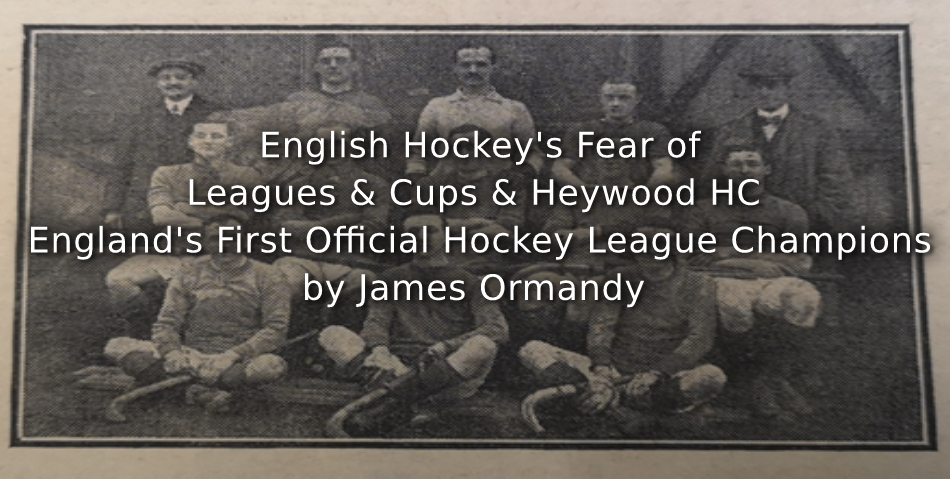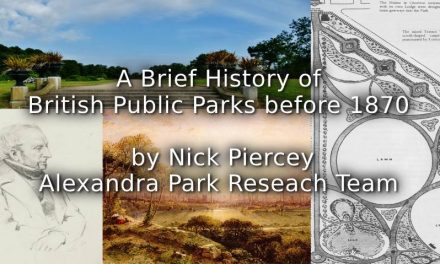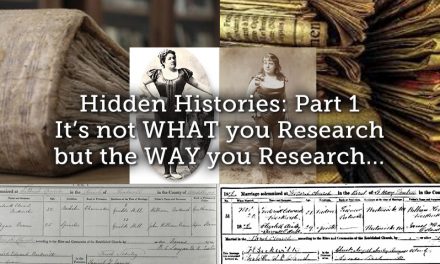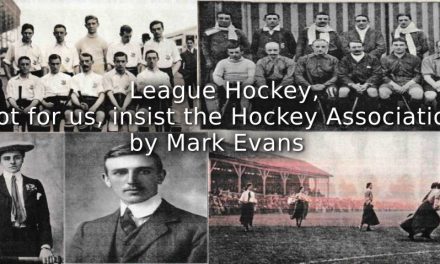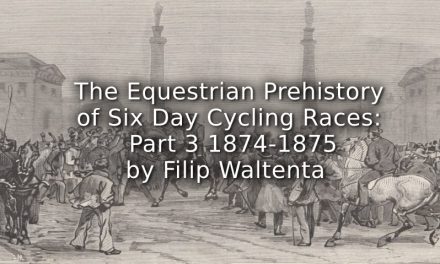Introduction
Hockey’s devotion to the pure amateur spirit outlawing cup, prizes and leagues has recently once again been well documented.[i] However, whilst both the Hockey Association (HA) and the All England Women’s Hockey Association would oppose league or cup competitions they would often turn a blind eye as unofficial cups and leagues could be found across the United Kingdom. Looking at men’s hockey we find that the question of leagues and cups would lead to a serious Edwardian debate and even to a small town Lancashire club becoming the first HA approved official league champions.
A National Sport Emerges
The second and successful attempt to form a national hockey association by upper middle-class clubs from Middlesex and Surrey along with Trinity College Cambridge in 1886 was a timely event as the drift away from association football by the middle class had begun as the Old Etonians and Trinity College graduates were losing control of the game to an industrial bourgeoisie who had introduced commercialism and professionalism partly as a result of having league and cup competitions. Meanwhile, rugby was in turmoil over commercialism, cup competitions, growing professionalism, brutality, greater working-class participation, and its loss of its gentlemanly games ethos that had stemmed from the public schools’ devotion to athleticism. This scenario was summed by one journalist in 1889:
Every sport has its day of prosperity and fashion. Football is not only played with greater roughness at the present day than it was ten years ago but the good tone and sportsmanlike feeling which were then universal are now in many parts of the country conspicuous by their absence; and it is consequently not surprising that many keen lovers of hard exercise and friendly competition have been looking about for another amusement. The want thus felt seems to have been supplied by the time honoured school game of hockey in at least two centres of the country.[ii]
The two centres were metropolitan suburban London and the suburbs of Liverpool and Manchester. At the start of the 1889-90 season the HA would have 40 members but many of the new clubs were not yet affiliated, and it had divided the country into two allowing the formation of the Northern Counties Hockey Association (NCHA) in 1888 who at their very first meeting refused a motion for the introduction of a cup competition. The HA would follow this lead in 1892 with the support of the five delegates of the NCHA it would outlaw the playing for cup or prizes. The HA as early as 1890 deemed “that Hockey was a game for Gentlemen and must be played by Gentlemen for the game’s sake” a statement that was undoubtedly an attempt to reserve hockey for those of the higher social reaches of society. The HA would show little or no enthusiasm for promoting the game beyond its early constituency as they were part of a privileged minority who could afford to play and protect the game from the commercialism of cups and leagues whilst hopefully excluding working class participants and their professionalism as hockey was a game where the working man could not out muscle their middle-class counterparts as they had in rugby and association football.
Despite its ban on leagues the hockey press would publish pseudo league tables of HA affiliated clubs and declare district champions though not every team had necessarily played each other. Nevertheless, great kudos was seemingly gained by being declared district champions. New Brighton Wanderers and Western (Eccles) were deemed the first Liverpool and Manchester district champions in 1893. In London Moseley who were unbeaten from 1885-1890 were followed by Wimbledon, Bromley, Staines, Kingston Hill, Hampstead, Tulse Hill and in 1913 Beckenham being declared district champions by the press.
In reality the HA were duplicitous in their approach to cups and leagues. In 1893 they allowed the newly affiliated Irish Hockey Union to have both cups and leagues yet would insist that the newly formed Northamptonshire HA withdraw their support for the Northamptonshire League if they were to be affiliated. The league which had begun in 1890 was mainly made up of Nonconformist chapel and church teams whose membership was drawn from the lower middle classes and shoe factory workers. The league had been won twice by Temperance HC and by Rushden HC. In 1893 the league stopped as eleven clubs became affiliated to HA. Northamptonshire, a county team made up of lower middle-class workers and shoe factory workers, was captained by B. C. Smith, a shoe laster, who were soon to be found defeating Oxford University twice (4-2, 2-1) and losing narrowly to Cambridge University and other counties. The league was reformed in 1895-6 by the chapel teams with Prince’s Street Baptists winning the league and the Northamptonshire HA sought approval for the league from the HA. It was refused and Northamptonshire forced to resign from the association a move that divided the teams in the county and undermined working-class participation in the sport as the league soon collapsed. The English HA took the view that amateurism could only be preserved if cups and leagues were forbidden a view supported in women’s game by the All England Women’s Hockey Association.
Northamptonshire Hockey League 1896[iii]

Northamptonshire Hockey League 1896[iii]

The 1893-4 Northamptonshire Hockey Association[iv]
The home nations hockey associations were affiliated to the HA as were other countries such as Germany who on affiliation abandoned cup competitions. Meanwhile, with HA approval, in Ireland the first Irish Senior Cup would be contested by six teams and won by Dundrum in1894 becoming hockey’s first ever cup, a junior cup would follow in 1895 for 2nd XI teams and small clubs. Provincial cups and leagues were soon in operation and encouraged the spread of the game. The village team of Mogeely would surprisingly win the Munster cup in 1901.

By 1905 The Ulster League had three divisions Senior, Junior and Minor creating a model that most other provinces would follow. A Northwest Ulster League was also in operation in the province. Many of the founder members of these leagues were English regiments based in Ireland who were often responsible for starting and developing the game in provinces such as Munster and could be found winning league titles and cups such as the Cheshire Regiment who won the Northwest Ulster League and the Derry Cup in 1914 before departing to war in France. The game in Ireland was viewed as a ‘garrison game’ because of the army’s role in its development by the Catholic community and by the fact that the majority of sides were drawn from the middle-class Protestant community as members of the Church of Ireland clergy were often forming clubs in their parishes. The first Kerr-Smiley Cup final would see Ballymoney captained by Revd. G.K. Birmingham defeat Portrush 1-0 captained by founder member Revd. R. P. Meredith.[v]
In Wales, the Welsh Hockey Association (1897) followed the HA on this issue but in 1905 a Central Wales League was started with the objective of increasing interest in the game in the district. The proposed league encouraged the formation of a club at Builth Wells who along with Llandindrod Wells HC administered the league of five clubs (Brecon HC, Hay HC,
South Wales Borderers Brecon Depot) and were hoping to encourage the formation of clubs at Knighton and Rhayader.[vi] The South Wales Borderers regiment would be unbeaten and as champions played a Rest of the League XI in the end of season gala celebrations drawing 1-1.[vii] The league lasted just one season as clubs sought membership of the Welsh HA thereby reverting to friendlies.
In Scotland five unofficial Championship leagues (Aberdeen, Highland, East-West, Midland, Borders) were in operation before 1914. The Scottish HA (1902) declared them unofficial in 1907 adhering to the HA rules but players who represented Scotland were drawn from these league sides. The largest was the East West Championship which was made up of 13 teams in 1910 from Edinburgh and Glasgow. Carlton HC would win the East-West championship in 1911 for the second time.

Institutional Hockey
The Army had numerous regimental cups and tournaments across the world as they were leading the development of hockey across the Empire yet the Army Hockey Association was affiliated to the HA. Their use of cup competitions to bring regiments together to improve esprit de core abroad was often defended in the hockey press by Lieut. J H Pattison.[viii] Cambridge University had a collegiate league of three divisions whilst Oxford had a college cup competition. The HA defended this situation claiming the league had no trophy awarded and they claimed Oxford only played for a cup in name. Trinity Hall winners in 1909 are pictured below with an object in front of them which the HA must have thought was not a cup or a prize! The London hospitals played for the Hospital Cup. These competitions were defended by one eminent England international Arnold Inman Draper who summed up his view and the HA’s policy in a letter to Hockey Illustrated:[ix]
With regards to competitions, I see no harm in them as conducted by self-controlled bodies among themselves-such as the Army, the Navy, the Public Schools or the Universities; but among the general run of what one might term Public Clubs I would consider the introduction of leagues or cups most undesirable, and liable to lead to endless harm.

Trinity Hall College winners of the Oxford University Cup 1909 [x]
As the Edwardian era began there was a rapidly growing army of clerks, shop assistants, commercial travellers and others swelling the ranks of the lower middle classes. This became a major factor in the significant and spectacular growth of all forms of hockey and occurred above all in the men’s game at the ‘junior’ club level most of whom would remain unaffiliated. HA affiliation peaked in 1908 nationally and in the counties of Cheshire (21 clubs) Lancashire (32 clubs) and Yorkshire (42 clubs). However, its growing popularity meant that the scale of un-affiliation was large as in Hull and District where there were 3 affiliated clubs out of 19 clubs in 1901. Across Yorkshire there were over 200 clubs in existence before 1914, in Manchester more than 70 and in Liverpool more than 50. The junior affiliated and small unaffiliated clubs were often struggling to complete full fixture lists, find pitches and changing facilities. One team new clubs such as York Moorside, who were a team of clerks from the Northern Railway Co., were often advertising for fixtures in the Yorkshire Post. Complaints from aspiring junior affiliated clubs about being unable to obtain fixtures against the original upper middle-class clubs who ran a closed shop of class exclusiveness appeared in the hockey press. Calls for leagues and a meritocracy within the game grew. However, in 1904 the Birmingham Gazette & Express had surveyed all the Midlands clubs about the introduction of leagues. Only two clubs Walsall HC and Sutton Coalfield HC declared themselves in favour of leagues whilst the overwhelming majority feared leagues would bring about rough play, a win at all costs attitude, commercialism, and professional ruining the pure amateur philosophy of the sport.[xi]
The introduction of the Manchester Ladies Hockey League promoted by Fred Brown of Oldham in 1910 and its rapid expansion to 36 teams in three divisions in two years led to a revival in the call for men’s leagues to help the junior and unaffiliated progress.
James W. Gleave of Heywood HC supported by Fred Brown called for a revival of the Liverpool and Manchester District Associations and proposed a third based at Preston to help junior affiliated clubs obtain suitable fixtures and bring under the HA umbrella the many unaffiliated clubs charging an affiliation fee of just 2s 6d as these clubs saw little point in paying the highest county affiliation fees in England charged by Lancashire HA which had been four times higher than those of Middlesex and Surrey. The associations would organise fixtures within leagues for these smaller clubs without trophies. These proposals caused great concern in the hockey press but were taken seriously by the HA who only at their last council meeting in Liverpool in 1911 restated their opposition to league hockey as they had done a year earlier. [xii]

In early 1912 the NCHA passed a motion to rescind the rule stating that affiliated clubs should only play other affiliated clubs allowing lower sides to play unaffiliated clubs.[xiii] The HA secretary Philip Collins had sent a circular to every affiliated club in the North canvassing support against leagues. Clubs were invited to a February meeting in Manchester to discuss the issue. Fred Brown spoke in favour of leagues and the Vice President of the HA Mr Burman spoke against league formation. Though the meeting carried a motion against leagues it was clearly evident that the smaller and less well known clubs were strongly in favour of a league whilst the large well known were unanimously against it.[xiv] At the NCHA AGM clubs canvassed again to find out whether there was support for Gleave’s proposal and the aspiring junior affiliated clubs whose memberships were drawn from the lower middle class were against the proposal as they were now gaining fixtures against the elite clubs’ lower sides rubbing shoulder with the upper middle classes. As one northern hockey journalist pointed out
‘there is strong tendency on the part of officials and indeed affiliated clubs in general to welcome the exclusion of these small clubs. They resent the popularisation of the game and would keep it exclusive as it was a few years ago.’[xv]
England’s First Official League Champions Heywood HC
Heywood HC was formed in 1904 by members who enjoyed a half day holiday on Tuesdays but by 1907-8 Saturday matches commenced and the following season affiliated to the Lancashire HA. Falling into debt they withdrew their affiliation playing once again unaffiliated sides apart from their local rivals Bury HC. Changing at Heywood Cricket Club they played nearby on a very well drained and even pitch. They would have two teams by 1910. James W Gleave was the son of a mill owner, a qualified engineer, and secretary of the club. He played half back in the 2nd XI, umpired for the ladies team, and made one appearance in the 1st XI in goal in Heywood’s first ever local derby with Bury conceding six goals.
The HA Commission held a conference in Manchester on the issue of local associations for junior clubs on March 2nd 1912 with Gleave outlining his plans to discuss the issue of the growing number of junior clubs and to propose the revival of local associations which was presented to the HA and surprisingly approved in April. Therefore, the HA had reached agreement with Gleave to form a Manchester District Association for junior clubs and to have a league if no trophy was awarded. It seems likely that the HA knew that Gleave was most likely to fail. It was April the end of the season and fixtures for the following season had been arranged by many clubs, unaffiliated clubs were now allowed to play affiliated clubs and the county associations refused to give it support seeing it as a rival organisation. Only four other clubs showed any interest, and one Swinton Park HC withdrew as the league started. The first ever official league match would see Heywood HC defeat Oldham HC 5-0.[xvi]

Heywood would win the league losing only once when they travelled to Singleton with nine men and finished the game 4-2 down with only seven due to injury.[xvii]



The First Official English Hockey League Champions 1913[xix]
Top Row: W. Pearson, H. Millett, A Hirst, C. Trevor, P. Healey
Middle Row: W. Stuart, F. Bouchier, H. Davenport, G. Spencer, F. Hartley
Front Row: J. Shipley, A. G. Schofield, P. Corlett.
“In view of the fact that only about four clubs have signified their intention of joining the proposed DA, instead of the thirty or forty clubs as was represented as probable at the Conference in Manchester the Council of the HA do not consider it necessary to take any further steps in the matter.”[xx]
Heywood may have been league champions, despite claiming he would try again the following season this was the end of Gleave’s attempt to support junior clubs by forming a league and to add to his misery the Heywood Ladies team whom he often umpired were relegated from Division 2 of the Manchester Ladies Hockey League. Men’s league hockey would next officially appear in the 1968/9 season with formation of the London Hockey League divided geographically into two divisions which were won fittingly by Cambridge University and Surbiton whose histories could be traced back to the formation of the HA in 1886.
Article © of James Ormandy
References
[i] Mark Evans League Hockey not for us insist the Hockey Association. Playing Pasts Posted 14th Jan 2021 https://www.playingpasts.co.uk/articles/gender-and-sport/league-hockey-not-for-us-insist-the-hockey-association/
[ii] St James Gazette 23rd February 1889
[iii] The Citizen Newspaper 24th March 1896
[iv] Hockey January 1894
[v] W. H. W. Platt Portrush Hockey Club 1909-2009 Centenary Book (Portrush Hockey Club 2009)p20-1
[vi] Radnor Express 12th October 1905
[vii] Radnor Express 6th April 1906
[viii] Hockey Illustrated 11th February 1909
[ix] Hockey Illustrated 11th February 1909
[x] Edgar Clover Collection (Hockey Museum Woking)
[xi] Birmingham Gazette and Express 20th November 1904
[xii] The Graphic 17th September 1910
[xiii] NCHA Minute Book 1888-1927 (Hockey Museum Woking)
[xiv] Birkenhead News 21st February 1912
[xv] Birkenhead News 12th November 1912
[xvi] Hockey 31st October 1912
[xvii] Heywood Advertiser 14th November 1912
[xviii] Heywood Advertiser 28th March 1913
[xix] Heywood Advertiser 26th February 1913
[xx] Hockey 28th February 1913

